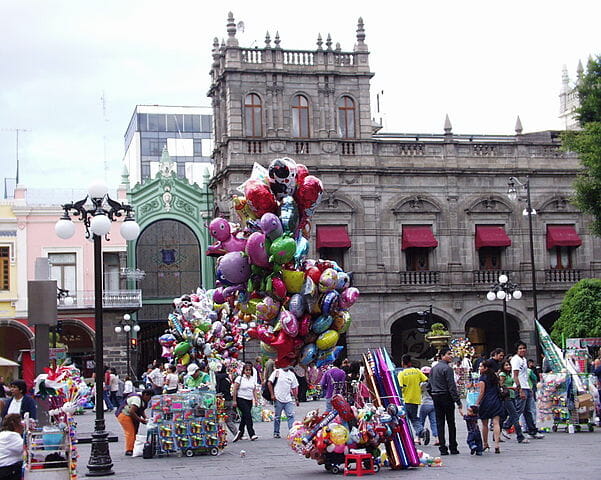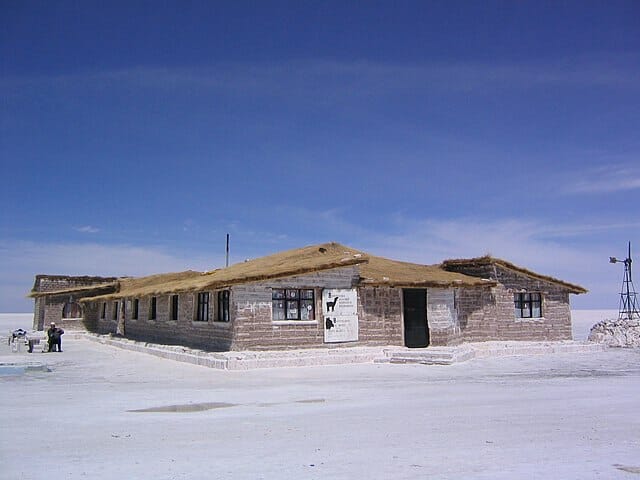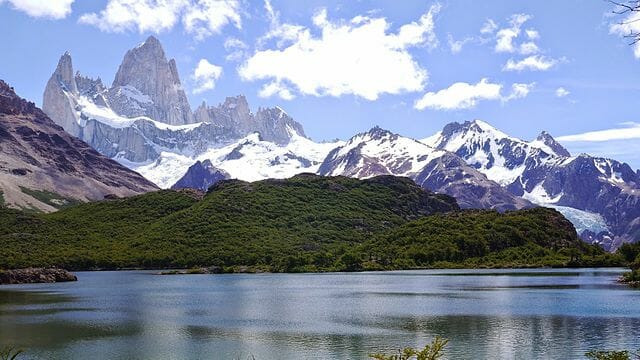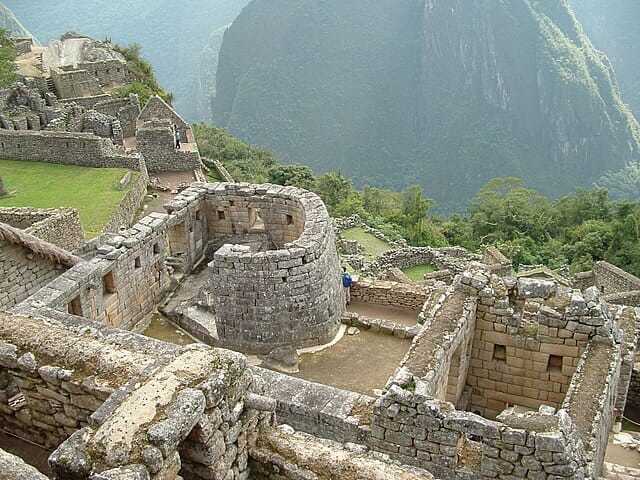So, it is Surreal Attractions in Latin America for you, buddy! To elaborate, entire South America, Mexico, the 7 Central American countries that include Belize, Costa Rica, El Salvador, Guatemala, Honduras, Nicaragua, and Panama, and the Caribbean Islands constitute Latin America.
These countries speak languages that are offspring of Latin. They are Spanish, French, and Portuguese. Once this region was collectively ruled by the respective countries and hence they were classified thus.
It will be a futile attempt to compile a short list ( 10 or 15) of top attractions of such a large region where some of the world’s most spectacular sights are located. They include Machu Picchu, the Andes mountain region, the Amazon rainforests, Iguazu Falls, Uyuni Salt Flat, and Zocalo.
Surreal Attractions in Latin America:
However, I have strived hard to bring in most of the less-popular attractions also along with a few of the extremely well-known surreal attractions in Latin America.
It is quite natural to leave out several beautiful sights for which I apologize.
Let us peruse several of the most beautiful and breathtaking attractions in Latin America.
-
Plaza De La Constitucion Mexico City
Yes, the name is quite long and difficult to pronounce and remember. That is why is shortly known as ‘Zocalo’. Look at what it points to.

Isn’t it tremendous?
It seems to be the largest ‘piazza’ in the world. Piazza or Plaza is the public square where all the official events of the Government are held.
It is no wonder that Mexico is the rage of the tourists currently. I am sure this stupendous attraction in Mexico city surpasses all other architectural attractions in Latin America.
The whole area occupies a staggering 46,000 + sq. meters. Around the square are standing the buildings of a cathedral, a palace, a city hall, several Government offices, and finally the Zocalo Metro Station.
Iy is a sheer wonder that such a colossal square and the buildings are standing unscathed for the past 7 centuries!
-
Pyramid of the Sun
The pyramids and the mysteries surrounding them have held our fantasy since Egyptian times.
This magnificent structure is located in Teotihuacan, Mexico. It is not far off but only close (40 km) to Mexico City.
Surprisingly, the Pyramid of The Moon, another one of the Mesoamerican reign is also built in Teotihuacan.
Did you notice the road leading to the Pyramid of the Moon? It is locally called “Avenue of the Dead”. What an appropriate name!
-
Belizian Reef
The barrier reef of Belize is the world’s second-largest reef and is rated as one of the star attractions in Latin America.
Scuba divers and to some extent snorkelers converge on the site of the Belizean reef throughout the year. Study this fact, mate.
The Mesoamerican Barrier Reef System is 1100+ km long and spread over Belize, Honduras, Mexico, and Guatemala. This whopping long barrier reef is also known as the Great Maya Reef.
The Belize reef itself stretches over 300 km in Central America.
Watch the incredible marine creatures that swim past the barrier reef.
-
The Great Blue Hole
In spite of this gaping hole in the middle of the Caribbean Sea, adventure travelers throng this world marine wonder in large numbers.
It is otherwise called a ‘sinkhole’ and lies close to the Belize barrier reef system. Already, scuba divers and snorkelers are exploring the reefs. They quickly visit the Great Blue Hoke and have a splash in it.
The sinkhole is 400 feet deep and its dia is a big 1000 feet! Mexico is known for cenotes (sinkholes) of various sizes and shapes.
Watch the daredevils dive head down in the Great Blue Hole to hit the bottom of it.
The Great Blue Hole is one of the terrific sights of Latin America.
-
Avenue of Volcanoes
Even while reading the name, a sense of eerie enveloped me. Sighting a single active volcano itself will pull us back from the proximity. What if you are led on a road leading to as many as 70 volcanoes?
The avenue of volcanoes is located in Quito, Ecuador and it is a 300 km long road.
The road of volcanoes passes through the foothills of the majestic Andes Mountains.
Ardent hikers are happy to go on long trekking through dense cloud forests, bypassing the summit of volcanoes where there are craters, and striking horticultural fields and groves.
If you reach Quito, the capital of Ecuador, you can hire a cab and reach the beginning of the avenue of volcanoes in just 2 hours.
-
Ring of Fire
It is almost a circular area, a very large one in Ecuador where the so-called ‘ring of fire exists. It denotes to the series of active volcanoes from where the fire is seen from a distance.
Can you imagine the wide area where the ring of fire’s wing spreads? It is a mindboggling 40,000 km, boss! Its width covers a staggering 500 km!
Naturally, the ring of fire region is one of the most visited sights in the world and is listed among the top attractions in Latin America.
Why the fire is thick and constant in the ring of fire? It is because there are nearly 1000 volcanoes that keep spewing fire and molten lave whenever they please.
One-third of the world’s earthquakes occur in the ring of fire region.
Just for your information that will project you a scholar in parties, know this fact: A volcano named Ojos Del Salado is the world’s highest volcano whose crater is situated at an altitude of 22, 600 feet!
In addition, it is an active volcano and is part of the Ring of Fire.
-
Montverde Cloud Forest
If you pride yourself as one a passionate nature lover and you love trees, plants, and bushes, you cannot stay away from visiting the incredible Montverde Cloud Forest Reserve.
It is one of the world’s wonders that somehow does not get the attention it deserves in spite of being one of the great sights in Latin America.
Costa Rica is the lucky country to get this green cover that pulls copious rainfalls from heaven, thus providing tremendous habitat for hundreds of birds, reptiles, and animals.
In addition, the cloud forests that are alternatively called ‘water forests’ wear a low cloud cover that seems to hang still always.
Notice the clouds hovering low, almost at a touching height.
Sadly, the 26000 acres of cloud forest near Montverde town in Costa Rica is visited by less than 100k visitors a year.
Here, take a virtual walk through the evergreen cloud forest.
Were you able to hear the calls of the dense tropical forests? Did you spot a few very rare birds that don’t leave the forest ever?
-
Torres Del Paine Towers
How about visiting the south end of the earth? I mean, would you like to go to the last country in the world after which, only the Antarctic region remains?
If so, choose to go to Chile’s capital Santiago and then travel a staggering 2800 km to see the terrific Torres del Pain mountains.
The Cordillera Pain as they are called is part of the Torres del Paine National Park that comprises glaciers, and water bodies.
This stunning sight in Latin America is part of Chilean Patagonia. UNESCO has declared the Torres del Paine National Park a Biosphere Reserve.
Ardent nature hikers are drawn to the site to test their endurance power because the trails are really challenging and the landscape bewitching.
Your tour of Latin America is not complete if you don’t go to the Galapagos Islands and spend a couple of captivating days in pursuit of the range of wildlife on the islands.
Every visitor who took the recommendations of travel bloggers seriously and went to the Galapagos could not stop raving about their most unforgettable holidays there.
The Galapagos Islands belong to Ecuador, the South American country that is located on the Pacific coast. The islands are further 900+ km away in the Pacific Ocean.
The islands’ rich geography and marine resources are dear to numerous birds, animals, and marine lives that they never leave the shores and now are endemic to Galapagos.
Do you know?
When Charles Darwin returned from the Galapagos archipelago, he formulated the theory of evolution. It points to the immense diversity of wildlife and marine life.
Some of the rare wildlife of the Galapagos include the cute Blue-footed Booby, brown pelican, friendly sea lions, sea cucumbers, and the swimming lizards (Marine Iguana).
-
The Great Salt Flats
The incredible vastness of the Bolivian salt flats makes them among the must-see attractions in Latin America.
Can you imagine an area of over 10,000 sq. km? The salt flat occupies that much ground in Bolivia. It is one of the natural wonders of the world.
The next mouth-gaping fact about the salt flats is they are situated at an altitude of 12,000 feet!
The official name of the salt expanse is Salar de Uyuni. Surprisingly, the salt desert has hotels to accommodate tourists. The hotels are built with blocks of salt!
Here is one such salt hotel.

Train Cemetery:
The abandoned train in its tracks is known as a ‘train cemetery’ and there are curious onlookers to see the ruins and touch the rusted train parts.
There is no other kind of similar tourist attraction in the world.
-
World’s tallest waterfalls
The water is falling from a whopping 3200 feet! It would surely be a breathtaking sight to watch the fall of water from such a terrifying sight.
It is the biggest attraction in Venezuela. I hope you recognize Angel Falls from the picture. Let me see if I can find a video of Angel Falls.
Ah, here is a mind-blowing capture of the Angel Falls, one of the top sights in Latin America.
-
Palacio de Bellas Artes
We are again in Mexico, the biggest tourist attraction in Latin America. When translated, it is ‘Palace of Fine Arts’.
It is a historical place where big events, festivals, and exhibitions of fine arts such as painting and sculpture, and concerts are held.
-
Cotopaxi
Yes, you guessed it right, bloke! It is a volcano, one of the biggest in the world, and it is living and spewing fire and ash.
An active volcano is a terrific sight anytime-eh?
We don’t get to see them. Only a very few people are lucky to see an erupting volcano. There is no better place than Latin America to watch a volcano erupt.
Cotopaxi volcano is located outside Quito, the capital of Ecuador, one of the Latin American countries. 19,000 feet high is where the volcano’s crater is situated.
-
Soumaya Museum
What a futuristic architecture and also unique! The building houses a museum on a floor space of 1,70, 000 sr. ft. The builders used 16,000 aluminum tiles in a hexagonal shape. It finds a place in the list of unique building designs
The Soumaya Museum is located in Mexico City.
-
Fitz Roy
It is not the name of a person but the name of a mountain whose picture is given below.
This extraordinary geological formation is in the Patagonia region, the near end of the earth (southern Chile). Patagonia is a stunning geographical wonder comprising glaciers, mountains, large tracts of grassland, and even fjords.
Visitors to the region are awed by the diverse landscapes culminating with three great water bodies that connect the large Atlantic Ocean with the majestic Pacific Ocean.
The three connecting seas are:
- Magellan Strait
- the Drake Passage
- Beagle Channel
If you look at them in Atlas, you can clearly see their connecting roles.
Fitz Roy mountain region occupies the southern portion of Patagonia. It sits precisely at the junction of Chile and Argentina.
There is another geographical name for this part of Patagonia. It is known as Southern Patagonian Ice Field.
Fitz Roy attracts veteran mountain trekkers whose aim is to scale its summit which stands at over 11,000 feet!
Here is another image of Fitz Roy that proves it is one of the attractions in Latin America.
 It is truly a spectacular sight.
It is truly a spectacular sight.
-
Ik Kil
As you can see, it is a sinkhole (cenote), a feature of Mexican geography. Mexico is blessed with a mindboggling 6000 of such cenotes spread over a large area but they are particularly more in numbers in Yucatan Peninsula.
Ik Kil is located in Pistie, a sleepy village that is also known for the ruins of Mayan civilization. The clear water entices daredevil divers who can’t resist their urge to jump in.
In addition, there are steps to climb up to the water and enjoy swimming.
Note:
Florida State is also home to several cenotes.
-
Iguazu Falls
From the look of it, the Iguazu Falls must occupy a place among the top 10 sights in Latin America. The Iguazu River-fed sensation is the pride of Argentina and Brazil as the waterfalls are spread over two great South American countries.
Surprisingly, this largest waterfall system comprising as many as 275 waterfalls was found only during the year 1541!
You can’t take your eyes off the Iguazu Falls.
If there is a walkway across the Iguazu Falls, you will notice you had walked 2.7 km from end to end.
This is a UNESCO World Heritage site.
-
Lencois Maranhenses National Park
How about walking, rolling, or sandboarding on this sand dune that stretches an incredible 1500 km? Nothing of this kind exists anywhere in the world.
The long stretch of sand is interspersed with gaps that are filled with rainwater. The video above shows a tourist rolling down on the hot sand and hitting the cool, fresh water in one of the lagoons.
This geographical wonder is in Brazil’s east coast.
-
Marble Caves
Aren’t these caves surreal? Mystic Patagonia continues to charm the world with its numerous geographical wonders.
You are taken in a boat in the General Carrera Lake up to the mouth of the caves whose inside walls are covered with a marble-like smooth surface. It was the result of relentless erosion for over 6 millennia by the lake.
These marble caves are rated as one of the most beautiful attractions in Latin America.
-
Colca Canyon
Canyons are always beautiful. Their vast expanse of rocky wilderness, unique wildlife, and enigmatic climate have held our attention.
Colca Canyon is in Peru, a South American country on the Pacific coast.
Colca Canyon is among the many tourist landmarks in Peru such as Machu Picchu. Its bottom at over 6000 feet ranks the canyon as one of the deepest canyons in the world.
Canyons are preferred habitats for eagles, vultures, and falcons. In Colca Canyons lives the Andes Condor, the majestic bird that is also known as the “Eternity Bird” because these large birds used to live for 70 years!
Apart from rare birds and animals, the canyon region has many natural geysers (hot springs).


